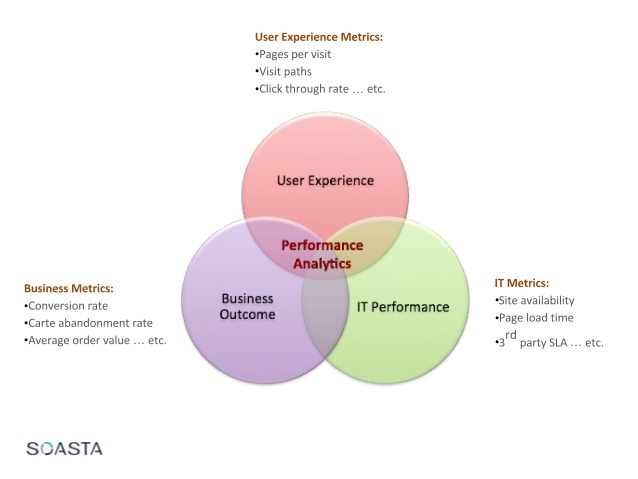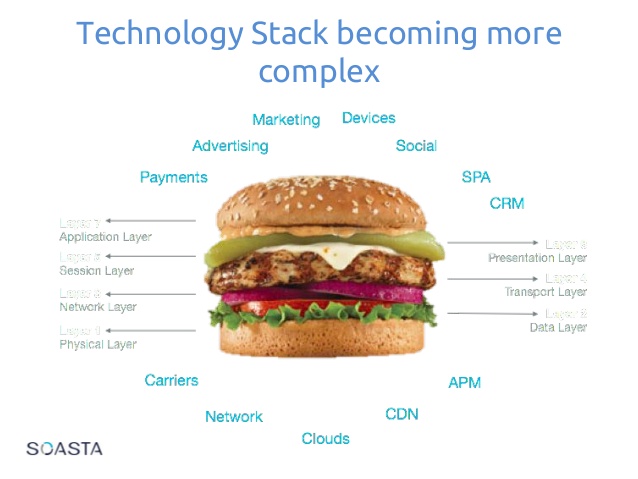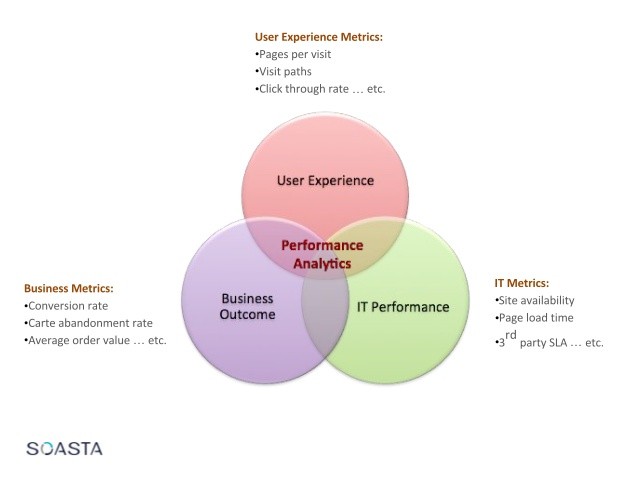- Content to context
- Monitoring analytics to using analytics data for management
- Quantity analysis to quality analysis
- Customer/User experience
- IT performance
- The business outcome of the digital effort

- Marketing
- Technology
- eCommerce
- Infrastructure & Operations
- Product
- Services
Jason Bloomberg, President, Intellyx says:
Application Performance Management tools must evolve to become Digital Performance Management. As the definition of "application" is both expanding and becoming more vague, it's important for these tools to focus on the customer experience end-to-end. That's essentially what we mean by digital performance.
Ann Ruckstuhl, CMO, SOASTA says:
2016 will see the beginning of a mass transition from APM to DPM (Digital Performance Management) with emphasis on front-end performance measurement, testing, and optimization based on analytics insights gained from the holy trinity of data - real user, business outcome and ops metrics. The need of the hour is to offer insights into data, along with the analytics data. Every search marketer with this value-added service to the client is going to future proof its growth and existence. This requires a great understanding between the client and the digital presence provider.
Erwan Paccard, Director of Customer Experience Marketing, Dynatrace says:
DPM collected analytics are uniquely positioned to help break silos by providing detailed insight around user behavior, delivered experience quality and the supporting applications and infrastructure health and performance across channels.
DPM Answers the Following Questions:
- Are the conversion goals and revenue targets defined?
- Is the infrastructure nurturing the growth rather than becoming a bottleneck?
- Are the customers happy?
- Is there a synergy between all the teams with a common goal in mind.
How Does DPM Help in Shifting the Focus on the User/Customer
- DPM helps you to facilitate and design a satisfying online journey for the user.
- DPM offers insights into the user experience journey from the digital performance perspective.
- DPM gives a holistic cohesive view of a company’s performance, aligning strategy, business goals and operations.
- DPM helps in predictive analysis.

- Digital Performance Management Is An Evolutionary Step Beyond APM - Digital performance management is APM with a companywide perspective. It goes beyond APM by managing performance in a customer and business context.
- Understand The Customer To Understand Performance - Good or bad performance depends on the customer’s expectations, which can be influenced by a range of factors such as geography or even by the customer’s stage in a single transaction.
- Adopt A DPM Approach For That Competitive Edge - DPM will subsume APM, providing better insights that lead to action that is more finely tuned to business improvement.
Google too is going ahead in this direction by introducing Google Optimize
Yesterday Google sent an email invite to Google Analytics users introducing Google Optimize. The email says: Companies big and small face the same challenge today. With ever more data flooding in, how do marketers act on all the useful insights they've learned? That's where Optimize comes in. Optimize makes it easy to test new online experiences for your customers. It's easy to implement. It's easy to create more personal experiences. And most importantly, it's easy to understand and act on the results. With Optimize you can create and deploy A/B, multivariate or redirect site experiments with our powerful capabilities:- Built on Google Analytics. Test what matters. Use your existing Google Analytics goals and metrics to quickly get an experiment up and running.
- Advanced Statistical Modeling. Optimize will model the real-world performance of your experiments for more accurate results.
- Sophisticated targeting tools. Deliver the right experience to customers at the right time with advanced experiment targeting.






